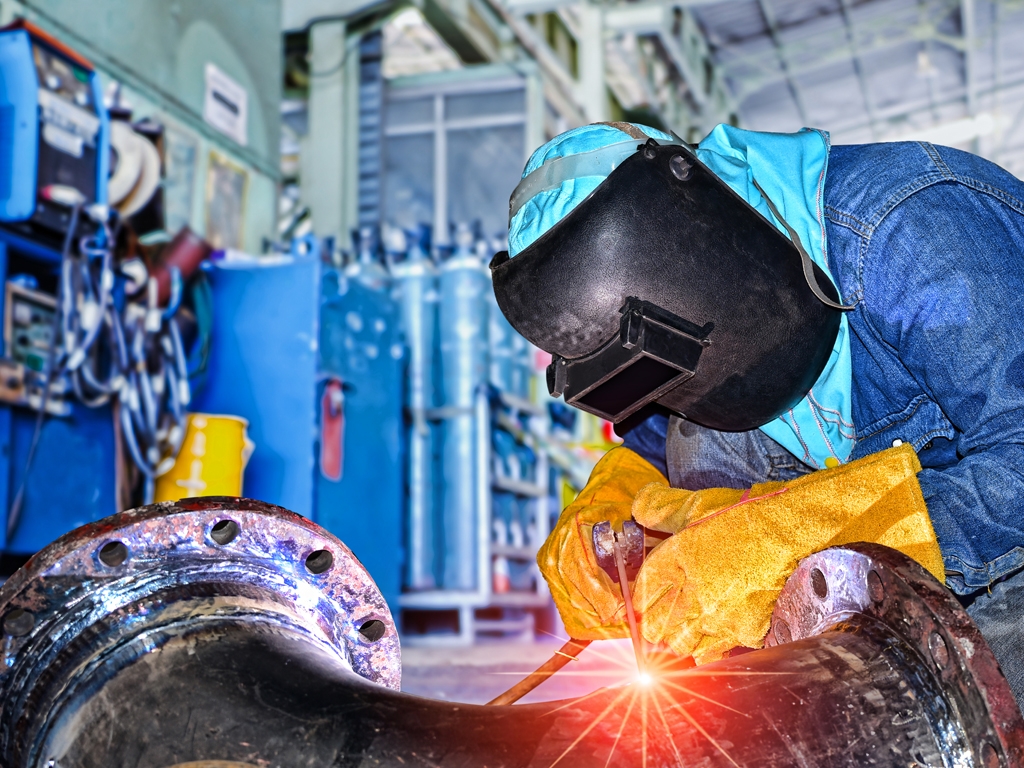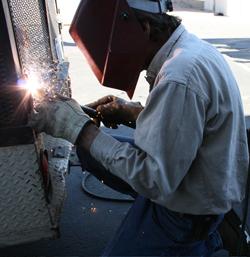Everything about Welding: Key Insights Into Techniques and Finest Practices for Success
Welding includes a selection of strategies, each matched for specific materials and applications. Recognizing these methods, such as GMAW, SMAW, and TIG, is necessary for attaining ideal results. Additionally, the best tools and security practices can not be forgotten. As prep work and fixing play vital duties in the welding process, understanding these components can significantly improve the quality of the end product. What are the key variables that ensure an effective weld?
Comprehending Different Welding Methods
Welding techniques encompass a variety of methods, each fit to particular applications and products. Amongst the most common techniques are Gas Metal Arc Welding (GMAW), Secured Metal Arc Welding (SMAW), and Tungsten Inert Gas Welding (TIG) GMAW, likewise called MIG welding, is preferred for its rate and flexibility, making it excellent for thin products. SMAW, or stick welding, is favored for its simpleness and effectiveness in outdoor settings, specifically with thicker metals. TIG welding supplies precision and control, making it suitable for complex job and non-ferrous metals (Belgrade Welding). Each strategy has its unique advantages and factors to consider, permitting welders to choose the most effective method based upon the job's requirements, material kind, and desired end results. Understanding these methods is crucial for successful welding
Vital Welding Tools and Tools
While various welding methods require certain skills, the appropriate equipment and tools are just as necessary for attaining quality results. Important welding equipment includes welding machines, which differ depending upon the method-- such as MIG, TIG, or stick welding. Safety gear, consisting of headgears, handwear covers, and aprons, assurances safety and convenience during the procedure. In enhancement, clamps and components help secure products in location, making sure precision in welds. Consumables like welding rods, wire, and securing gas are also critical elements that influence the quality of the weld. Furthermore, devices such as grinders and cutters help with surface area prep work and post-weld completing, adding to an expert outcome. Buying premium equipment ultimately boosts the performance and performance of welding tasks.
Safety And Security Practices in Welding
Correct security methods are vital in the welding market to secure employees from prospective hazards. Welders have to wear appropriate personal safety equipment (PPE), consisting of helmets with correct shading, handwear covers, and flame-resistant garments. Sufficient air flow is vital to minimize direct exposure to unsafe fumes and gases created during the welding process. In addition, employees need to be learnt the correct handling of welding tools to avoid mishaps. Fire safety procedures, such as maintaining flammable materials far from the welding area and having fire extinguishers easily available, are essential. Routine evaluations of tools and offices can help recognize prospective dangers prior to they lead to mishaps. By adhering to these safety and security practices, welders can create a much safer working setting and decrease dangers connected with their trade.
Readying Materials for Welding
Preparing products for welding is an important step that considerably influences the high quality and integrity of the end product (Fabrication). Appropriate preparation involves cleaning the surface areas to get rid of pollutants such as rust, dust, and oil, which can endanger the weld. Methods such as grinding, fining sand, or making use of solvents are generally utilized to achieve a clean surface area. In addition, making sure that the materials mesh comfortably is crucial; voids can result in weak welds. It's additionally vital to think about the positioning and positioning of the components, as this will certainly influence the simplicity of welding and the last outcome. Ultimately, picking the appropriate filler product and making sure compatibility with the base metals is essential for attaining solid, long lasting welds
Tips for Achieving High-Quality Welds
Accomplishing top notch welds calls for attention to detail and adherence to best practices throughout the welding process. Proper joint preparation is vital, making sure surfaces are tidy and free from impurities. Choosing the suitable filler product and welding method based upon the base metals is critical for optimal bonding. Keeping constant traveling rate and angle while welding can promote and avoid flaws harmony. Additionally, regulating heat input is essential; excessive warm can cause bending and compromised joints. Frequently examining the welds throughout the process permits instant changes if essential. Finally, using ideal post-weld therapies, such as cleaning and anxiety alleviation, can improve the resilience and integrity of the weld, ultimately ensuring an effective result.
Troubleshooting Typical Welding Issues
Welding usually provides challenges that can influence the high quality and honesty of the final product. Usual issues such as porosity, inconsistent weld grains, and overheating can develop, each requiring particular troubleshooting strategies. Recognizing these troubles is necessary for welders to enhance their abilities and attain excellent results.
Porosity Issues Explained
Although porosity can usually be neglected, it continues to be a critical issue in welding that can jeopardize the honesty of a completed item. Porosity refers to the existence of tiny gas pockets within the weld grain, which can compromise the joint and lead to premature failure. This issue typically develops from pollutants, dampness, or inappropriate securing gas protection throughout the welding procedure. To alleviate porosity, welders should validate that the base products are completely dry and clean, make use of appropriate shielding gases, and preserve constant welding criteria. Frequently evaluating the tools and environment can additionally aid identify potential problems before they manifest in the weld. Attending to porosity properly is vital for attaining solid, sturdy welds that meet quality criteria.

Irregular Weld Beads
Inconsistent weld grains can considerably impact the quality and strength of an ended up product. Various aspects contribute to this concern, including inappropriate travel speed, wrong amada weld tech amperage setups, and inconsistent electrode angles. When the welder relocates as well rapidly, a grain might show up narrow and lack infiltration, while relocating also slowly can cause extreme accumulation. Additionally, making use of the incorrect amperage can result in either damaging or too much spatter, both of which concession weld integrity. The welder's method, such as irregular lantern activity, can also result in unequal bead look. To alleviate these problems, welders must concentrate on keeping steady, controlled movements and making certain proper equipment settings to attain uniformity in their welds. Consistency is essential to accomplishing solid and trusted welds.
Overheating and Bending Issues
Excessive warmth throughout the welding procedure can bring about significant getting too hot and contorting concerns, impacting the structural stability of the workpiece. These problems usually materialize as distortion, which can compromise alignment and fit-up, making more setting up testing. Variables contributing to overheating include the choice of welding parameters, such as voltage and take a trip rate, along with the kind of material being welded. To minimize these concerns, welders need to preserve consistent travel rate and suitable warm input while keeping an eye on the workpiece temperature level. Furthermore, pre-heating or post-weld warmth therapy can aid reduce anxieties created by fast air conditioning - Belgrade Fabrication. Routine evaluation and adherence to best techniques are necessary in preventing getting too hot and making certain the long life and integrity of welded frameworks
Regularly Asked Concerns
What Are the Occupation Opportunities in the Welding Industry?
The welding sector supplies diverse career possibilities, including positions as welders, educators, inspectors, and designers. Experts can function in production, building and construction, aerospace, and automotive sectors, profiting from strong need and affordable wages in various functions.
How Can I Improve My Welding Rate Without Compromising Top Quality?
To improve welding speed without compromising top quality, one must practice reliable strategies, keep tools, optimize setups, and boost hand-eye control. Regular training and seeking responses can also greatly add to accomplishing quicker, top notch welds.
What Accreditations Are Offered for Welders?
Various qualifications exist for welders, including those from the American Welding Society (AWS), the National Facility for Building And Construction Education And Learning and Study (NCCER), and various industry-specific companies. These qualifications improve check these guys out employability and demonstrate skill efficiency.
Exactly How Does Welding Affect the Features of Metals?
Welding influences the homes of steels by changing their microstructure, which can bring about modifications in solidity, strength, and ductility. Heat input and cooling rates during the procedure greatly impact these material characteristics.
Can I Bonded Dissimilar Metals Together?
